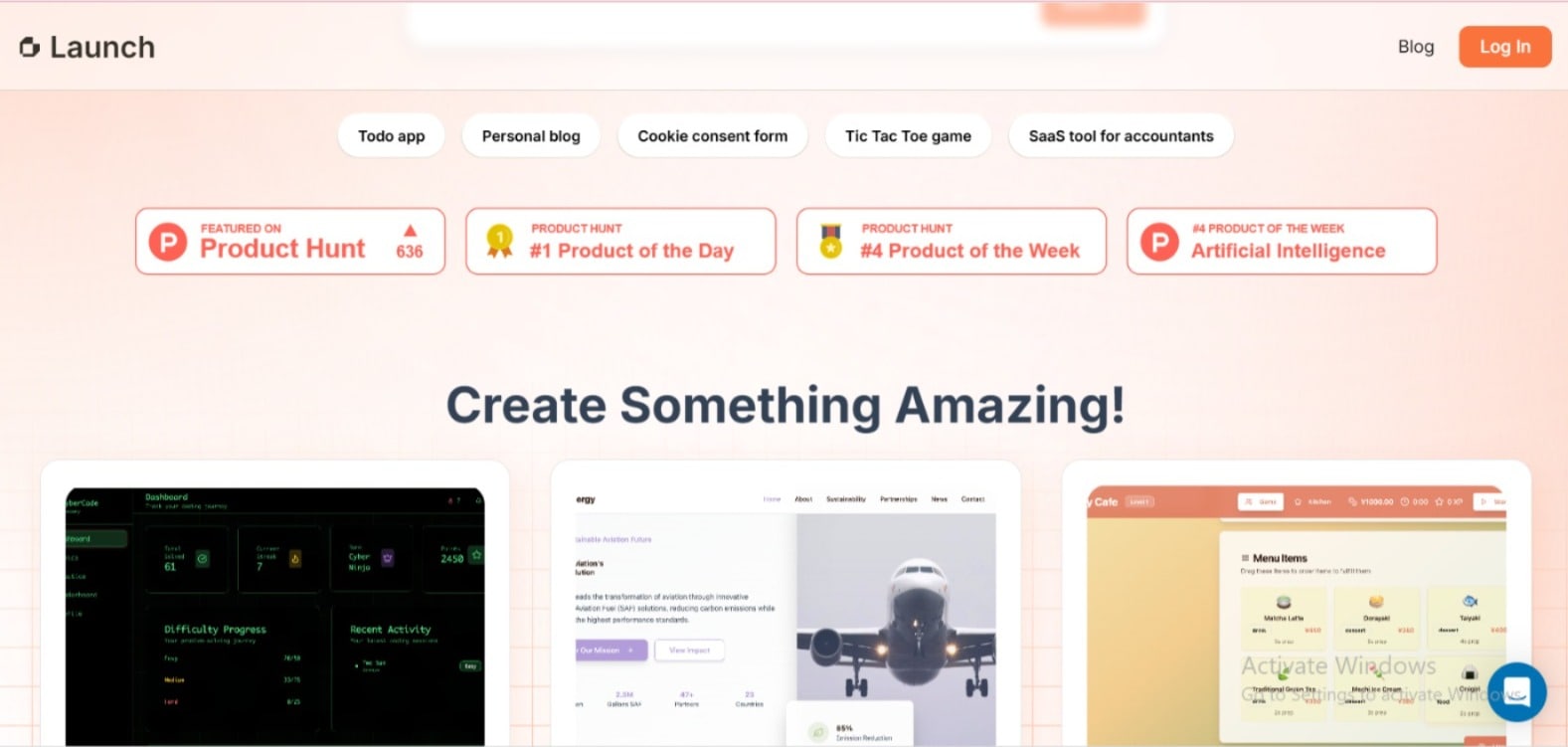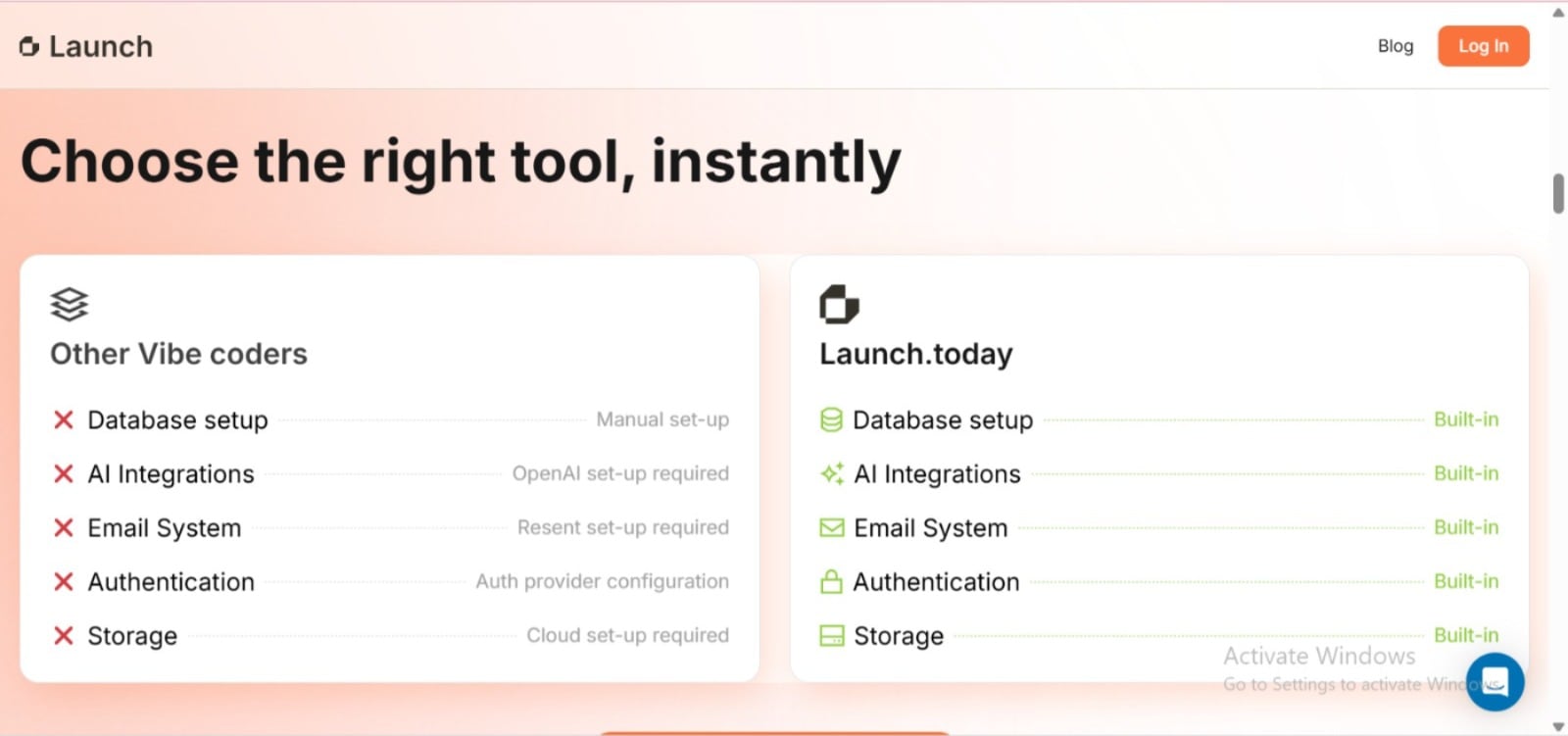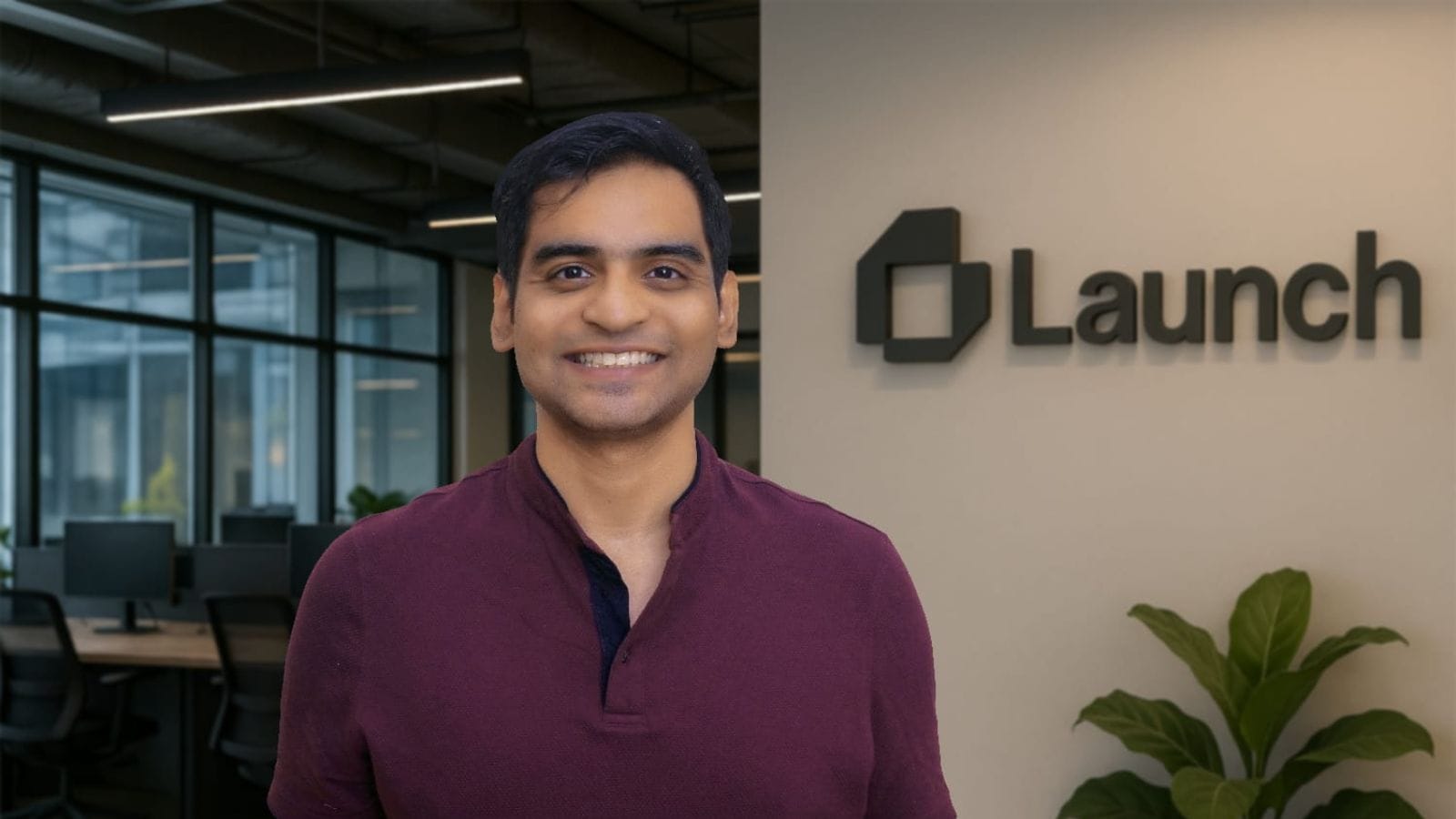Planning to launch a startup? Thinking of expanding your cake-baking business and reaching new consumers? You need a website.
Creating a website is a prerequisite for any business — it’s like your second address, a digital identity that makes you visible on the internet. However, building a website often requires graphic designers to create the layout and programmers to write the code (HTML, CSS) to add pages, sub-pages, and features. And if you are starting out, this process can be a hassle, and expensive too.
A Bengaluru-based startup wants to change that with the help of artificial intelligence (AI).
Founder Prakash Sanker said Launch helps anyone build a website using plain English prompts, transforming them into professional-grade websites and web apps, placing AI at the forefront of the technology’s potential to disrupt existing website-building tools.
“If you are a fitness instructor and you want a website, you can come to my platform. You can say, ‘I am a fitness instructor, I want to create a website to manage my clients, my sessions, and my payments,’ and then, in a few minutes, we basically create an application for you that works,” Sanker told indianexpress.com in an interview earlier this week.
From applied maths to AI
Sanker, who studied applied mathematics at Stanford University, said the idea behind the AI-based platform is to reduce the number of steps required to build web-based applications such as websites, web apps, and progressive web apps (PWAs) and make the process accessible to anyone looking to create a website of their own.
“You don’t need any coding experience. You can just come in, enter a prompt in plain English, and the platform will respond and do the work,” he said.
Story continues below this ad
 Launch claims users can create a website in five to six minutes using the platform. (Screenshot: Launch)
Launch claims users can create a website in five to six minutes using the platform. (Screenshot: Launch)
Before working on Launch, Sanker held roles at companies like Palantir, Splunk, and Remind in Silicon Valley. In 2017, he moved to India to become the CTO of Zelp, which later went public on the NSE and BSE. He then built a mental health startup, which he eventually shut down, and explored new business ideas.
Sanker recalls being interested in applying large language models (LLMs) to cybersecurity, but later realised that the market in India wasn’t ready. In 2022, he shifted his focus to website and app creation after recognising the greater mass-market potential and demand in that space.
‘No longer need to work with a programmer’
As artificial intelligence becomes more widely adopted across workplaces and within companies, Sanker sees greater potential for how AI can be used to build websites without requiring any prior knowledge or coding experience.
“I don’t think people are just talking about it for no reason,” he said. “I think they are talking about it because it’s pretty cool technology that’s enabling a lot of new workflows and new possibilities. What we are doing now was simply not possible two years ago: the large language models weren’t good enough back then.”
Story continues below this ad
“You can create a website using my platform in five to six minutes, whereas working with a programmer might take a few days. You no longer need to work with a programmer to actually build a product,” he said, highlighting the primary difference between what Launch is aiming to do and how websites are traditionally built.
 Users pay for “prompts” on Launch. (Screenshot: Launch)
Users pay for “prompts” on Launch. (Screenshot: Launch)
Sanker claimed building a website on Launch is easy. All you need to do is describe your app, and the AI generates your entire stack (backend, authentication, database, and UI) all automatically. You can test and iterate, then go live by deploying your app with a single click, complete with a real domain and real users.
To build a website using Launch, users pay for “prompts” — essentially, messages they send to describe or modify their website. For example, if someone wants to create a website for selling their artwork, that counts as one message. If they then request a change, like adjusting the button colour or layout, that counts as another message. Each prompt or message is equivalent to one interaction with the AI, which uses these inputs to generate code and build the site.
‘Websites will remain highly relevant’
The full-stack AI platform was launched in beta in April and went live in June. Sanker said he is seeing demand for the product from all over the world, not just India.
Story continues below this ad
“I think websites are still relevant because the biggest screen people use is their phone, and they want to see and interact with things in a manual way. While AI agents will have their place, websites will remain highly relevant in the future. I believe there will be more websites tomorrow than there are today,” Sanker replied when asked if websites are still relevant in the AI age, amid predictions by experts that AI agents might replace websites and mobile apps.
 Launch also has plans to introduce human support. (Screenshot: Launch)
Launch also has plans to introduce human support. (Screenshot: Launch)
Although Sanker’s platform is still new, he said he is working on integrations to make it easier for users to connect with various software applications. The current focus is on improving speed, allowing websites to be generated much faster. In addition, Sanker mentioned efforts to improve the reliability of the database, which is essential for building real, production-ready applications.
Looking ahead, there are also plans to introduce human support. “If users get stuck or aren’t getting the results they expect, they can pay to get help from a real person,” he said. “We will build a lot of internal tooling to make that possible and to scale that part of the business more easily,” Sanker added.
The startup is currently bootstrapped, but Sanker may raise external capital soon to support its expansion.
Story continues below this ad
“Our main goal is to enable the many entrepreneurs in India to build their own businesses quickly and establish a strong software presence. That’s what motivates us every day, and that’s where our focus really lies,” Sanker said

